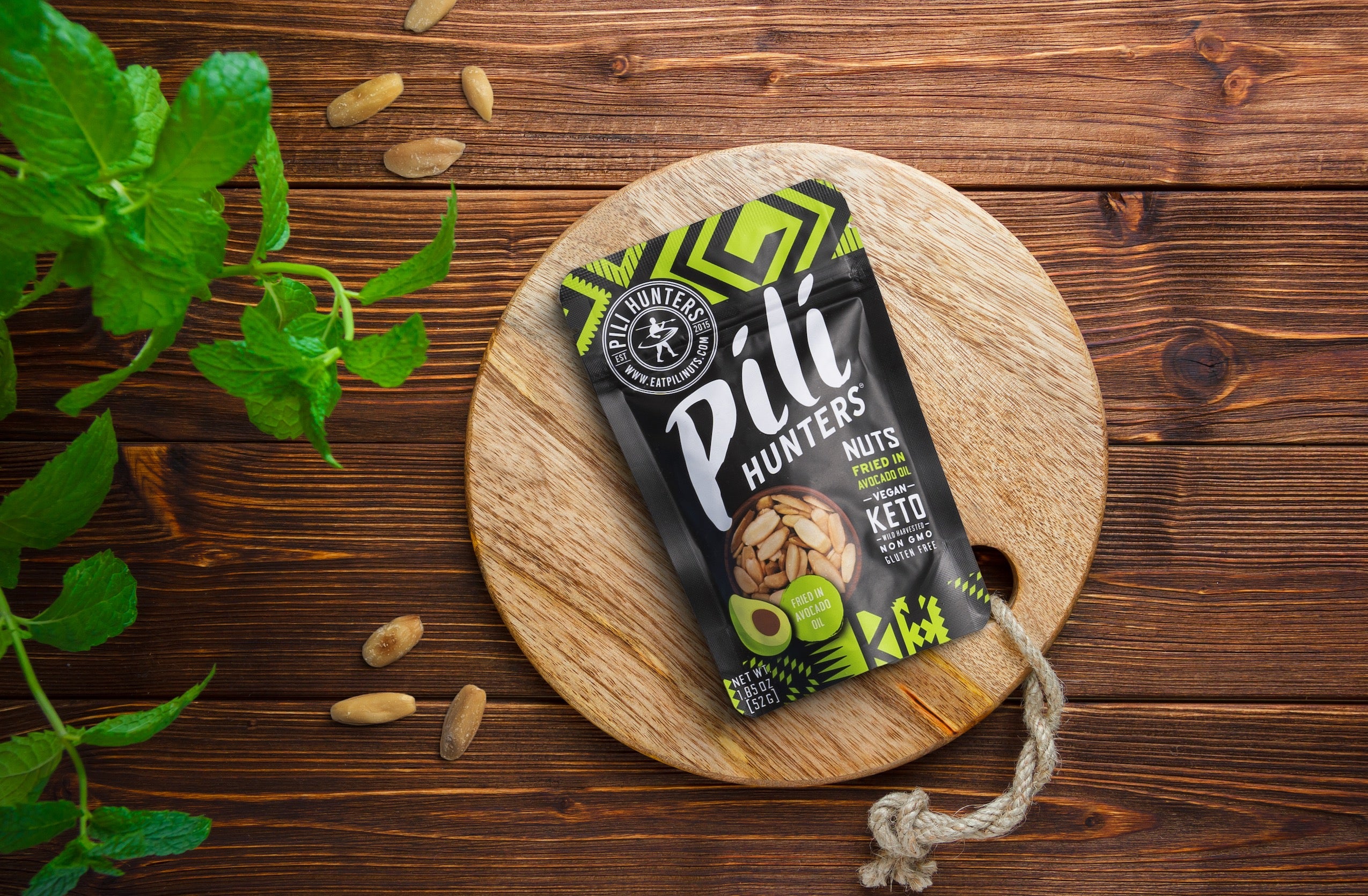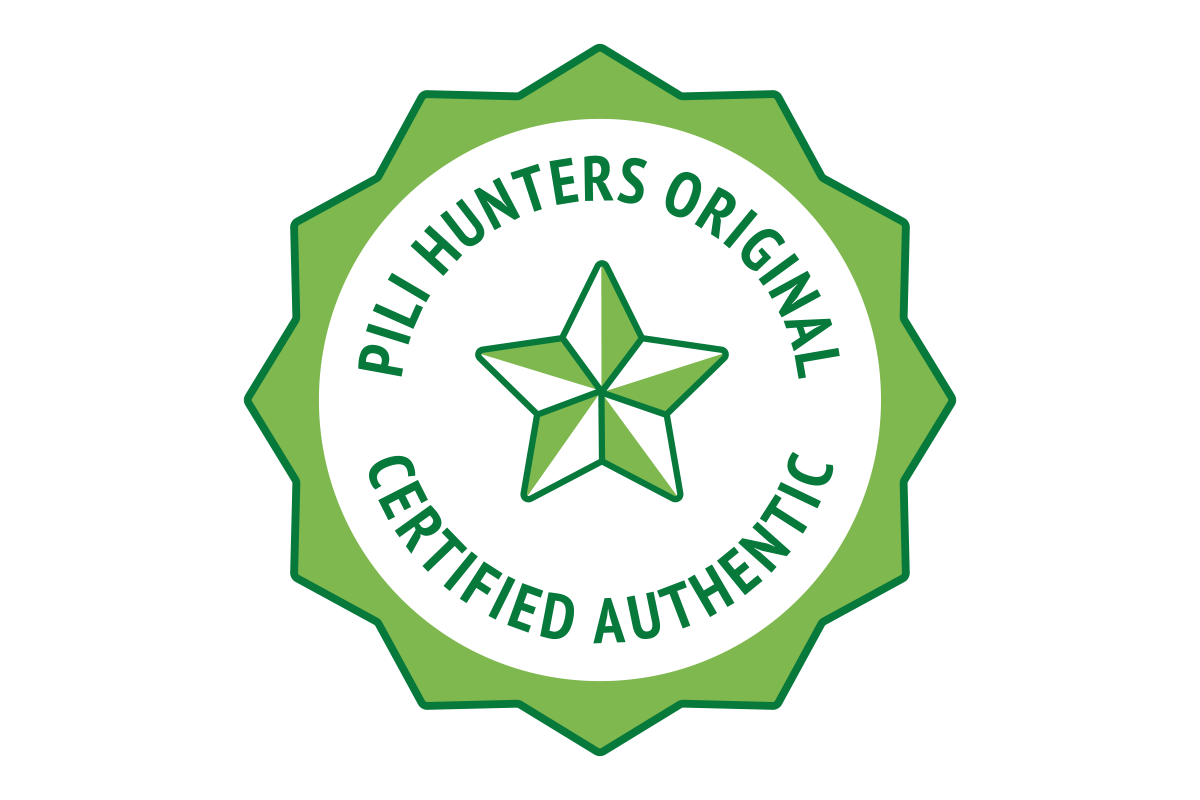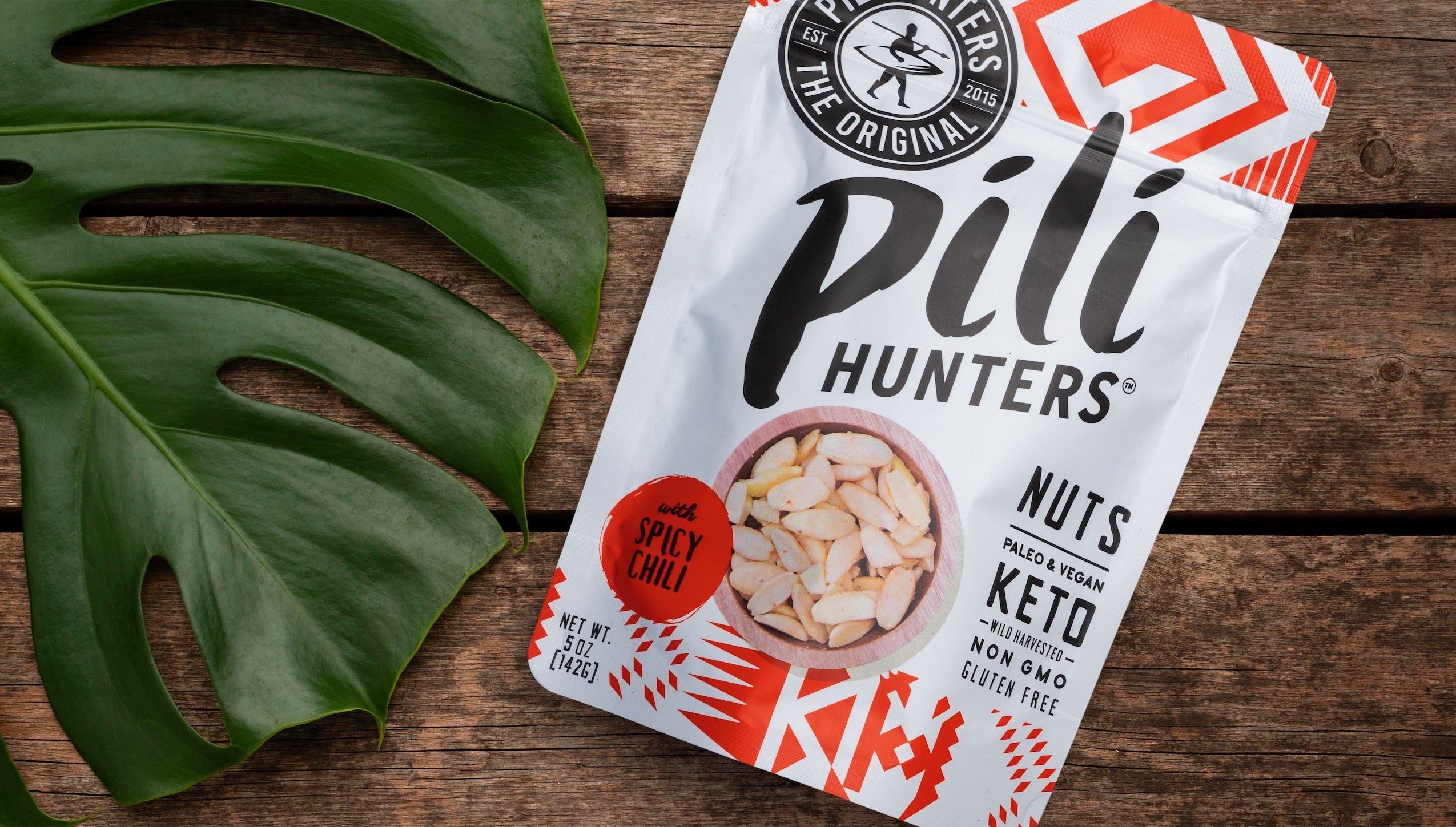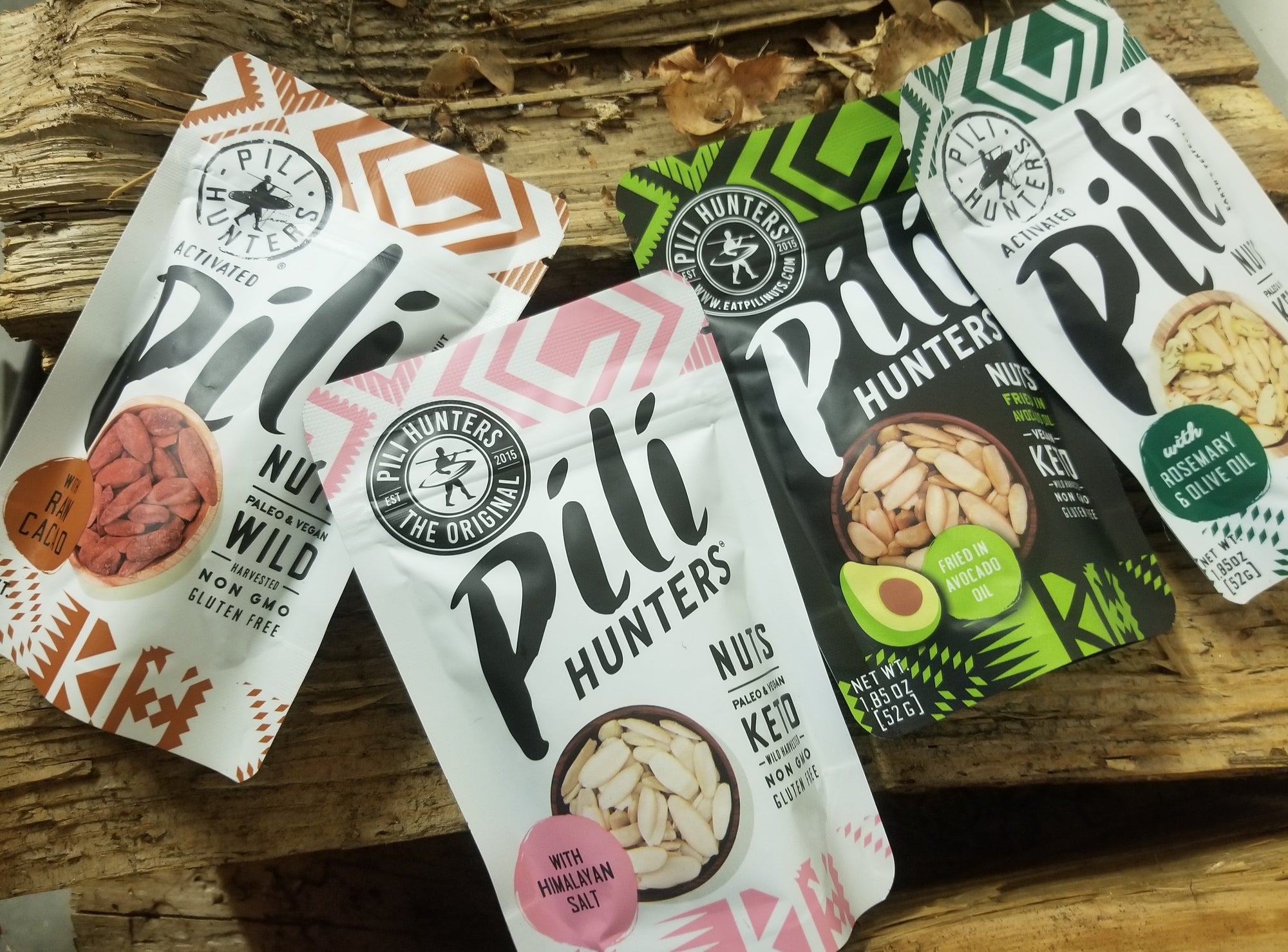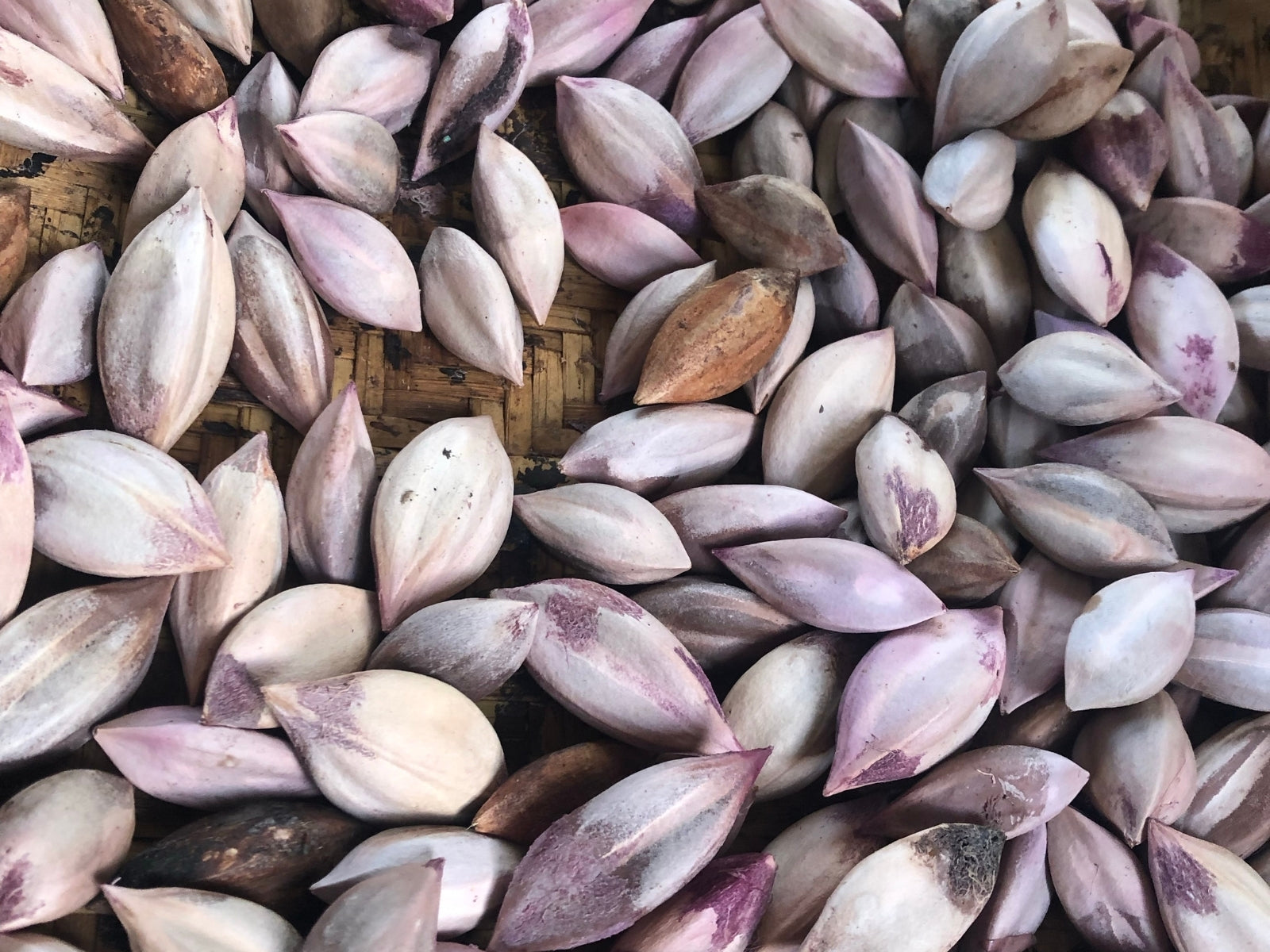Are you wondering what pili nuts is in English? In English, the Pili Nut tree (pronounced peely) is technically called Canarium Ovatum. However, the word pili also translates to Chosen One. If you’re thinking that there must be a story behind the name, you’d be right. Keep reading!
First of all, you should know that pili nut trees can only grow in a few places on earth. While they are known as ‘stress trees’, meaning they can grow in harsh conditions with little to no maintenance, their cultivation is tricky and attempts to farm them outside of their indigenous zones have been unsuccessful. You don’t choose to grow the pili nut tree—the pili nut tree chooses where it grows.
One of the only places they grow is in the Bicol region of the Philippines on the island Luzon, where they have thrived in the wild for centuries, sustaining communities who have been custodians of pili nut trees for generations—it’s all very symbiotic. Here the trees are irrigated only by rain, and fed by soil rich with volcanic ash from the nearby, and still active volcano Mayon. Its perfect conical shape is iconic in the region’s landscape, and is the place of legends.

The Legends of Volcano Mayon
It’s said that the volcano erupted out of the landscape on the very spot that two star-crossed lovers were killed in their battle to be together. The princess Magayon had been blackmailed by the warrior Pagtuga, who she agreed to marry in order to spare her father’s life. Previously, another warrior by the name of Pangaronon had saved her from drowning, and the two had fallen in love. On the fateful day of Magayon and Pagtuga’s wedding, Pangaronon appeared to stop the marriage. A battle ensued, resulting in death all around. But the princess and her lover are said to have been buried together, and Volcano Mayon is the manifestation of their love.
Another version of this legend says that Magayon was the name of the princess’ uncle who was very possessive of his niece. She became smitten with a young warrior, who rescued her from her royal chamber so they could elope. When Magayon discovered the princess was gone, he chased the couple, who in turn prayed for the gods to stop him. Out of nowhere, a landslide took Magayon’s life, and his anger continues to erupt from Volcano Mayon to this day.
The Chosen Ones
Legend or no legend, Volcano Mayon incites wonder and respect, with locals revering it for the fertile soil and beauty it provides to the region, while fearing its volatile nature, always teetering on the brink of an eruption.

The pili nut owes everything to this volcano and others in this region. The rich soil accounts for the high nutrient content of the pili nut, containing all nine amino acids to make it a complete protein. Rich in copper, manganese, calcium and more, locals have thrived in this region for generations, their lives and livelihood intertwined with these magnificent trees. The pili nut is the chosen nut for these locals, who have realized and thrived on their nutrition, but they themselves are the Chosen Ones as the custodians of the world’s perfect nuts.
|
Pili Nut Industry in the Philippines For a long time, the pili nut was the Philippines best kept secret, even though they’re ubiquitous throughout the country, enjoyed by locals and coveted by tourists who stuff them into their carry-on luggage at airports before heading home. To this day, pili nuts in the Philippines are most often served salted and fried in refined coconut oil, or carmelized in heaps of sugar. Delicious to be sure, but their nutrition compromised for mainstream commercial sale in the country. |
Sharing the perfect nut
When Pili Hunters founder Jason Thomas first tried pili nuts on a kite surfing trip to the Philippines, he was blown away by the flavor. Rich, buttery, slightly sweet, he couldn’t believe the way this nut almost melted in his mouth. It was love at first taste.
Perhaps even more surprising to Jason was that he had never heard of pili nuts before. How could it be that in 2015, these nuts were virtually unheard of at home in the United States? Now, Jason wasn’t a businessman looking for an investment. His background ranges from being a mountain guide, to a fisherman, to an archeological assistant and much more. He’s an explorer and an adventurer, never sitting for too long in the same spot. Yet from that very first taste of the pili nut, Jason would be changed forever. Sharing the pili nut with the world became his mission.

Jason wasn’t looking for a business opportunity when he began importing pili nuts to the United States. A few years on in this journey, Jason sometimes questions his sanity. “It’s been really hard and the snack food industry is cutthroat. I make every attempt to rise above all that BS by remembering why I got into this in the first place: to share the perfect nut with the world while creating jobs here at home and in the Philippines.”
For Jason, Pili Hunters isn’t so much a profession as a vocation. Starting a business was the furthest thing from his mind at the time. But it was as if the pili nut chose him, a vocation he humbly accepted. Jason explains, “I make every attempt to understand the pili nut, its cultural relevance, and local production. I’m involved in every step of the supply chain to not only understand the business, but to forge relationships, too, because in my mind, business is personal.”
The growing pili nut super food industry
Pili Hunters is guided by reverence and respect for the Bicol region and its people, with the singular mission of sharing the perfect nut with the world, while supporting those communities that produce it.
It’s exciting to see the pili nut industry grow as more and more people discover this superfood, but Jason has concerns about corporate interests. He doesn’t want to see his partners and the communities who rely on the pili nut for their livelihood to be taken advantage of by those who are only interested in their own bottomline. Sadly, in the food industry, he’s seen this time and time again and has himself been burned by unethical business practices. In fact, Jason actually turned down an offer from a local superfood company because the deal didn’t mesh with his ethics.

By upholding the communities in charge of cultivating the pili nuts, Jason ensures, through Pili Hunters, that the integrity of the pili nut remains intact. The pili nut is a super food because of the reference surrounding it by those who care for it. Disrupt that system and you’ll see diminished communities, diminished sustainability, and diminished pili nut nutrition in favor of higher volumes, lower costs, and greater profits for big name corporations.
In order to preserve the integrity of the pili nut—its high nutritional value, its cultural significance, and the communities it supports—choose your supplier wisely because your support makes a big impact. It comes down to respect: respect for the pili nut, respect for the environment, and respect for each other. Stay wild.
